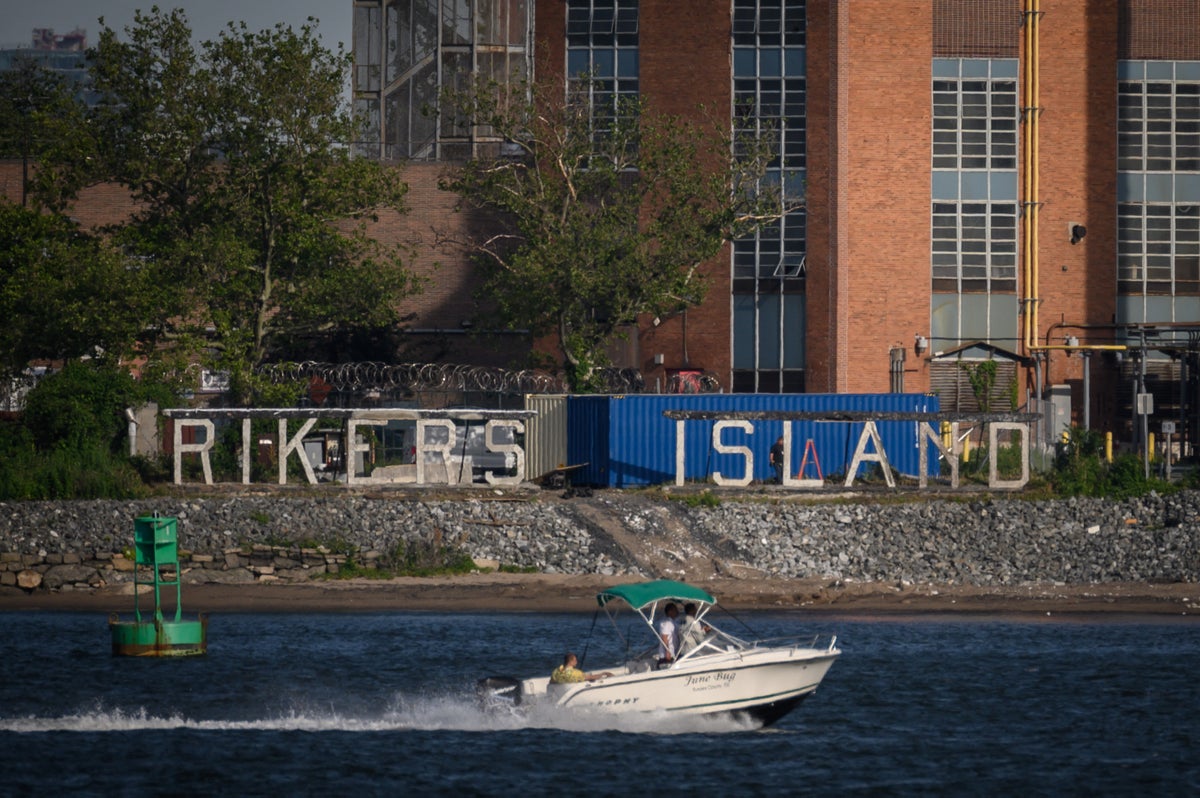
At least nine people have died while in the custody of the New York City’s Department of Correction this year, including two deaths this week alone.
On Tuesday, a man died in custody in Bellevue Hospital’s prison ward in Manhattan. On Monday, an inmate died at the George R Vierno Center at the city’s main jail complex on Rikers Island. Last year, at least 16 people died while in custody at Rikers.
Another man who was recently held at the facility, Antonio Bradley, died eight days after he tried to hang himself inside a holding cell at Bronx Criminal Court. He was on life support at Lincoln Hospital, but his death on 18 June was not recorded as a death in custody because he was granted “compassionate release” while on his deathbed, according to The New York Daily News.
After visiting the troubled facility on 22 June, Mayor Eric Adams said that “the era of neglecting the violence and dysfunction of our city’s jails is over,” pointing to the confiscation of more than 2,700 weapons at the complex, attributed to the return of “uniform staff returning to the job” and “tactical search operations”.
“Much work remains, but [Department of Correction commissioner Louis Molina] and I are committed to tackling the challenges facing us and implementing the reforms needed to build safer and more humane jails for those who live and work on Rikers,” the mayor said in a statement.
While City Hall reports that rates of slashings and stabbings at the complex have fallen 63 per cent since March, reports from the Board of Correction this month show violence spiked in April and May alongside use-of-force incidents among correction officers.
A statement from the Legal Aid Society, which represented Albert Drye, who died at Bellevue on 21 June, said the department refused to provide his attorneys with “the most basic information concerning his passing,” an “all-too-common scenario that we – along with client’s family members, friends and community – routinely face in these tragic situations.”
The organisation demanded “immediate answers from the city and the jail medical staff” about his death, and revived calls to elected officials, prosecutors and others “to facilitate the decarceration of local jails before another New Yorker has to spend their final moments confined to a cage in a facility grappling with a full-fledged humanitarian crisis.”
The mayor’s appearance and announcement at Rikers is “both irresponsible and callous,” according to the Legal Aid Society.
“This is emblematic of how City Hall views incarcerated people as second-class citizens, guilty until proven innocent and unworthy of compassion,” the group said in a statement. “The extraordinarily high death rate on Mayor Adams’ watch, and the suffering of all who are kept in abysmal conditions inside, are a humanitarian crisis that this administration seems incapable of rectifying any time soon.”
Advocates have pressed for federal authorities to address the crisis, but a federal judge this month approved the city’s “action plan” for reform, potentially averting a federal takeover of the jail.
The plan “represents a way to move forward with concrete measures now to address the ongoing crisis at Rikers Island,” according to a filing from US District Judge Laura Taylor Swain.
Judge Swain warned that the city could face consequences if officials do “not fulfill their commitments and demonstrate their ability to make urgently needed changes.”
A 26-page plan released by the city in May outlines steps for the Department of Correction to address staffing issues and reorganise leadership. Mayor Adams also issued an executive order creating an interagency task force to address the crisis at the jail.
“As the plan makes clear and as the court has agreed, we have a strategy to aggressively untangle the dysfunction that has plagued the jails and set them on a path of real, enduring reform,” Mayor Adams said in a statement earlier this month.
“We will not rest until the dysfunction on Rikers is rooted out, these reforms are implemented, and the people in our care and working on the island are safe around the clock,” he said.
A federal monitor appointed to oversee deteriorating conditions at the jail was cautiously optimistic about potential progress at the jail, but he warned that he had “serious concerns” about the city’s ability to put the plan into action, arguing that the plan is not sufficient by itself to address daily “danger, violence, and chaos” inside the jail.
After “decades of mismanagement, quagmire of bureaucracy, and limited proficiencies of many of the people who must lead the necessary transformation, serious concerns remain about whether the city and Department are capable of fully and faithfully implementing this Action Plan with integrity,” according to the federal monitoring team.







